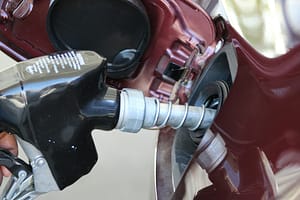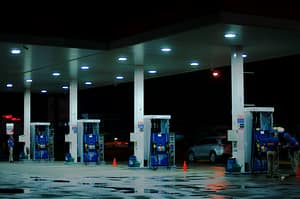

The change from the time when the Peoples Democratic Party (PDP) was in charge to the current government led by the All Progressives Congress (APC) has greatly changed how petrol prices are set. This change has had a big impact on Nigeria’s economy and how people live every day.
Over time, changing petrol prices have affected many parts of the economy, especially transportation.
When petrol prices went up, it also made it more expensive to travel, making some people look for other ways to get around.
This change has affected not just travel and shipping, but it has also made things harder for the whole country’s economy.
Higher petrol price mean that the cost of almost everything goes up because fuel is needed to move products around.
This has made life tougher for many people in Nigeria, especially those who were already having a hard time.
Just when Nigerians thought the petrol price might not go up much more, President Bola Tinubu announced on May 29, 2023, that the government would stop subsidizing petrol, which made price jump.
After this announcement, petrol price in Nigeria went up to between N615/litre and N650/litre.
Here’s a quick look at how petrol prices have changed in Nigeria over the years:
Before Subsidies:
- 1970s-1980s: After Nigeria became independent in 1960, petrol prices were pretty stable because of the country’s growing oil industry. But, the global oil crises in the 1970s started to push up domestic fuel prices.
Introducing Subsidies and Price Changes:
- 1980s: To protect the economy and its citizens from global oil market ups and downs, Nigeria started subsidizing fuel, which kept the petrol price low but was expensive for the government.
- 1986: After oil prices fell and the economy faced problems, General Ibrahim Babangida’s government removed some fuel subsidies, which made the petrol price go from 20 kobo to 39.5 kobo per liter.
Frequent Price Changes:
- 1990s-2000s: Nigeria often changed petrol prices, usually because of changes in subsidies. For example, prices went up several times under General Sani Abacha in the 1990s and reached N11 per liter by 1998.
- 2000s: President Olusegun Obasanjo’s time saw big price hikes, especially in 2003 and 2004, when prices went from about N26 to N70 per litre.
Recent Changes and Moving Towards Deregulation:
- 2012: President Goodluck Jonathan tried to completely remove fuel subsidies on January 1, 2012, which made petrol prices jump from N65 to N141 per liter overnight. This led to big protests, and the government partly brought back the subsidy.
- 2016: President Muhammadu Buhari’s government set a new petrol price range of N135 to N145 per liter, aiming to end subsidies.
- 2020-2022: During the COVID-19 pandemic and with global oil prices falling, the government adjusted petrol prices again, moving towards a market where prices are set by supply and demand.
2023-2024: Under President Bola Tinubu, subsidies were removed, and petrol prices rose to N615/litre.